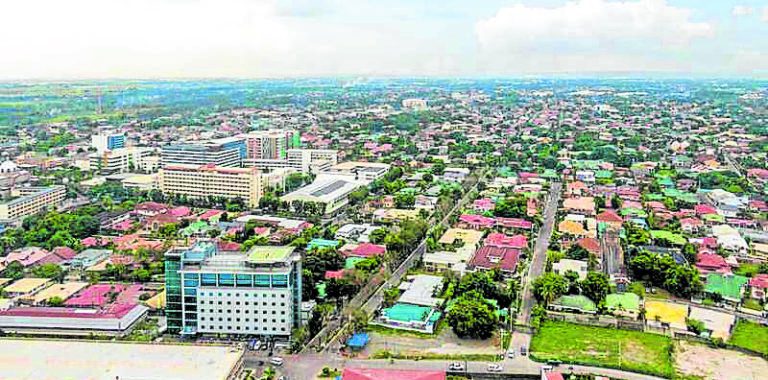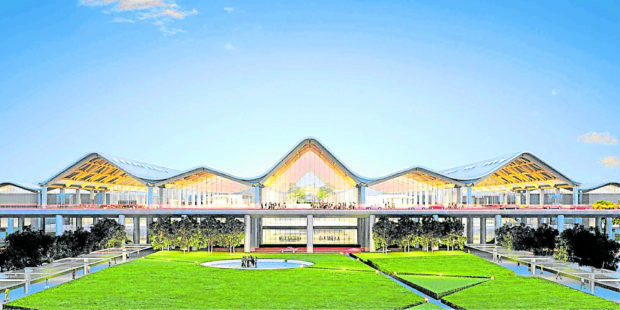
Centuries would shape the colorful history of Pampanga—said to be the first province and the “richest spoil” created by the Spaniards in 1571—resulting in a rich cultural heritage evident in its people, arts, crafts, cuisine and traditions.
Its local economy, too, would rise to prominence, particularly over the last few decades, as among the most attractive investment destinations today—recovering from the devastating eruption of Mount Pinatubo in 1991, and becoming a model of a resilient economy.
Economic powerhouse
Today, Pampanga is a thriving culinary capital that boasts of progressive industries, such as manufacturing, wholesale and retail trade, motor vehicle repair, accommodation and food service, among others.
This first-class province has also seen the completion of modern infrastructure that further boosted its competitiveness as a destination—from its expressways and highways that improved access and connectivity, to its five existing municipal ports which function as fish landing centers and two airstrips namely the Basa Air Base in Floridablanca, and Clark International Airport in Clark Freeport Zone.

On top of its strategic location and close proximity to Metro Manila, the pool of skilled workers in the province and its improving infrastructure, Pampanga also houses special economic zones and industrial parks like the Clark Freeport Zone and Special Economic Zone, Clark IT Park and Pampanga Economic Zone, among others. These ecozones and industrial parks help generate job opportunities for communities, further boosting the economic potential of the region.
The government also plans to build the country’s first “agri-industrial business corridor” (ABC) in Pampanga to provide more opportunities to the countryside. The site will include modern agribusiness facilities and a national seed technology park. ABC is expected to complement the planned Clark Fresh Market, which will rise at the Clark Civil Aviation Complex.
Balance between modernity, tradition
But while the province of Pampanga has become a vision of continued progress, its cities offer a distinct charm, as it managed to keep a balance between modernity and tradition.
Take the case of its capital, San Fernando City, regarded as the center of commerce and trade in the region. It has grown into an “agro-industrial-commercial metropolis” that is economically competitive given its strategic location within the Manila Clark-Subic Economic Triangle.
Large scale enterprises continue to flock to San Fernando, currently home to convention centers, shopping malls, banking institutions, bottling companies and manufacturing companies. According to its local government, San Fernando is generally classified as a services and retail economy, with these industries comprising about 75 percent of the total registered businesses within the city.
At the same time, however, it has maintained its cultural richness—be it for its culinary expertise, festivities, traditions, or its distinct craftsmanship. After all, this 6,930-ha city has laid claim to titles such as the “Christmas Capital of the Philippines” and “Home of the Giant Lanterns.” Its “Via Crucis,” which portrays the passion and death of Jesus Christ during Holy Week, was a crowd drawer pre-pandemic.
Angeles City, too, presents an ideal mix of the old and new.
The birthplace of sisig, Angeles City has seen a construction boom in the past decades with businesses putting up malls and commercial spaces, hotels, residential condominiums, restaurants and other recreational complexes.
What makes this area much more exciting is the fact that it will benefit from the upcoming Malolos-Clark Railway project. This 53.1-km railway line, which will connect Bulacan to the Clark Economic Zone and the Clark International Airport, will be the Philippines’ first airport express railway service. One of its seven stations will be in Angeles City.
Vibrant and thriving, this highly urbanized city however managed to preserve its cultural character as it features some of the most interesting Filipino heritage structures of the 19th and 20th centuries; museums; the Clark Air Base, an American-led military fort, among others.
Article was originally published in Inquirer and written by Marielle Medina.







More Stories
Weekend wanderer: This walk in Manila is a trip to art and to our past
Enjoy no-frills camping in the great outdoors in Tanay
Landco Pacific raises the bar for premium resort and leisure living